At Cherryland, capital credit retirements are something the co-op and its members have come to expect and enjoy year after year. We’ve been really fortunate to have the opportunity to return millions of dollars to members over the last 14 years. As Rachel mentioned in her CEO column, this will be the first year in quite some time that the co-op does not retire capital credits. So, I wanted to take this opportunity to talk a little more about how capital credits work and the thought that goes into those decisions here at Cherryland.
As an electric cooperative, we’re a 501(c)12 not-for-profit organization. That means we do things a little differently when it comes to our finances. As the title suggests, the monthly bills you pay don’t exist to generate a profit. We use that money to maintain a reliable electric system and keep the cooperative up and running. Any profit or excess revenue, also known as margins, is eventually returned to the members who own the cooperative—that’s you!
There are three parts of that process that often cause some confusion: allocation, retirement, and the timeline of the process. So, let’s dive a little deeper into each of those topics.
Allocation
Every year, we crunch the numbers and assess the revenue that came in, how much we needed to maintain operations, and how much is left over. We have our financials audited and the co-op books are finalized. Any margins, or that “leftover” revenue, is then allocated to the membership based on how much energy they used in that particular year. Our member-owned power supplier, Wolverine Power Cooperative, goes through this same process. As a Wolverine member, Cherryland receives an allocation, and the cooperative passes that allocation onto our membership. Members receive a notice with their bill in the spring informing them of their share of the previous year’s margins from both Cherryland and Wolverine. This is often where the confusion starts. While you receive notice of the allocation, you won’t see that money returned right away. That leads me to capital credit retirement.
Retirement
Every year, the board of directors takes a hard look at the cooperative’s financial status. They consider their equity management plan, which helps the co-op satisfy our financial obligations to our lenders, the co-op’s current financial status, and everything in between. They’ll take that information and determine if the co-op is in a good position to retire capital credits. If so, the retirement goes toward paying back previous years’ allocations. The board can choose to retire the total amount allocated from a previous year, a specific dollar amount, or a percentage of the previous years’ margins. That’s when you’ll see that bill credit or check in the mail.
If the board decides the cooperative is not in a good position to retire capital credits, they may decide to save that retirement for another year. This year, the board decided not to retire capital credits simply because the co-op isn’t ending the year with positive operating margins to share.
Timing
Every year, the cooperative goes through the allocation process and deciding whether or not to approve a retirement. But it’s often 20 to 25 years between those two actions—allocation and retirement. Cherryland has paid off past allocations operating on a roughly 19-year cycle. However, that timeline may begin to stretch due to current cost pressures and a history of really fruitful allocations. When a capital credit retirement is approved by the board, 75% goes toward the oldest outstanding allocation and 25% goes toward the most recent allocation, making sure even our newest members get to experience the cooperative difference.
So, to put all of that into context—the dollar amount on the allocation notice you received earlier this spring is what you can expect to see in the form of a capital credit retirement sometime in the next 20 to 25 years. For our next retirement, 75% will go toward paying off the remainder of the 2004 allocation and 25% will go toward the most recent allocation. When this process starts over again next year, you’ll receive your annual allocation notice in the spring. However, ending this year with negative operating margins means you’ll notice a $0 allocation from Cherryland along with your share of Wolverine’s allocation.
We know capital credits can be a little complex, but they’re an important part of who we are as a cooperative and worth taking a little extra time to explain. While the board had to make the difficult decision not to retire capital credits this year, I can assure you it’s all part of the process and you will enjoy this part of the cooperative difference again soon.



As long as we continue with quality electric power, and the uninterrupted power we’ve come to expect and enjoy, we are behind your decisions 100%.
Thank you for this comment. We are absolutely committed to maintaining the service excellence we’ve worked so hard to build. Cherryland is seen as a leader in the State as it pertains to electric reliability and we are very proud of that. We know that is our members’ top priority. Unfortunately, the costs of providing that level of service are going up. But, we will not let our reliability slip, I promise.
Thank you for the explanation. I understand how my electric company operates.